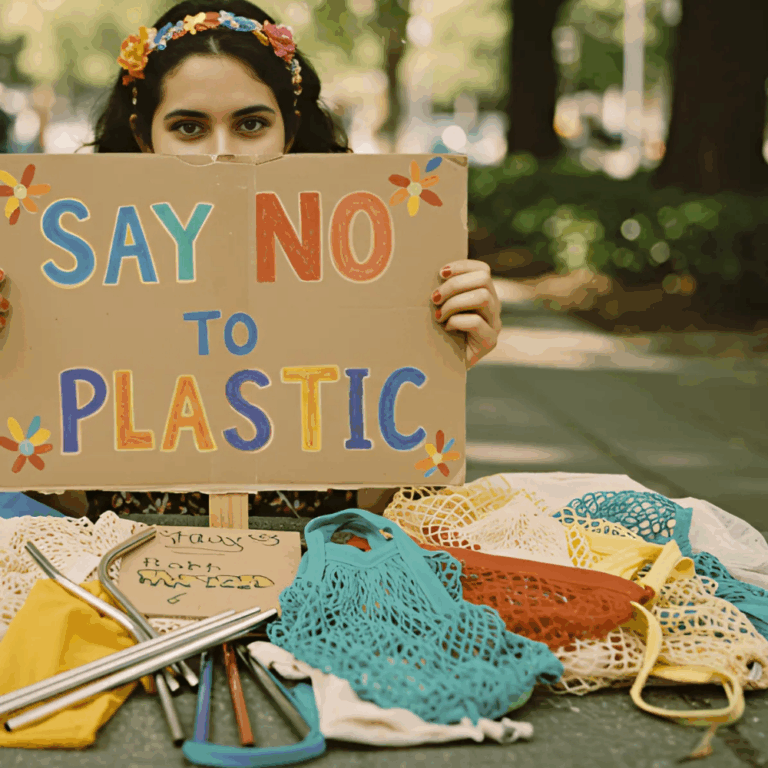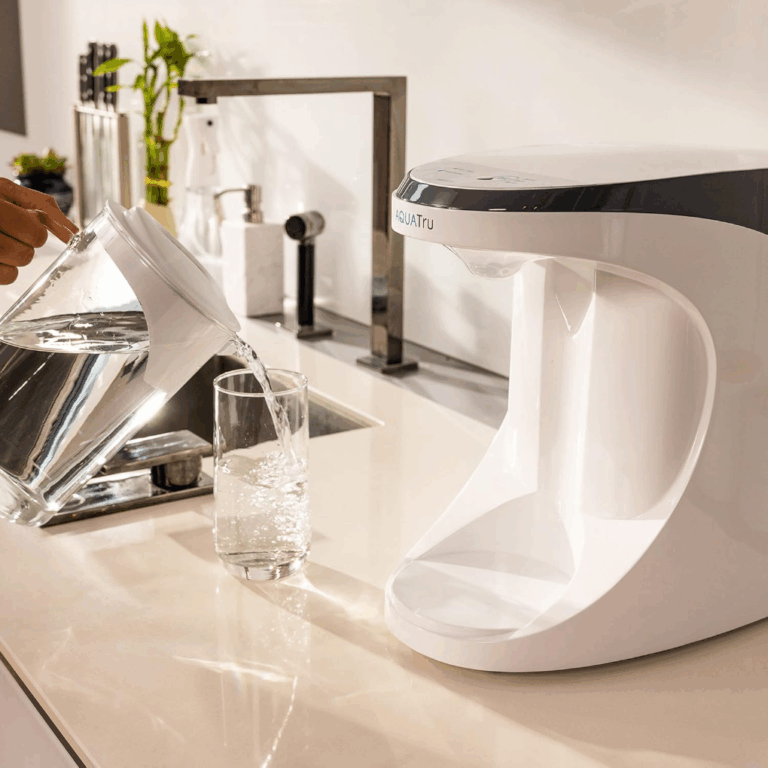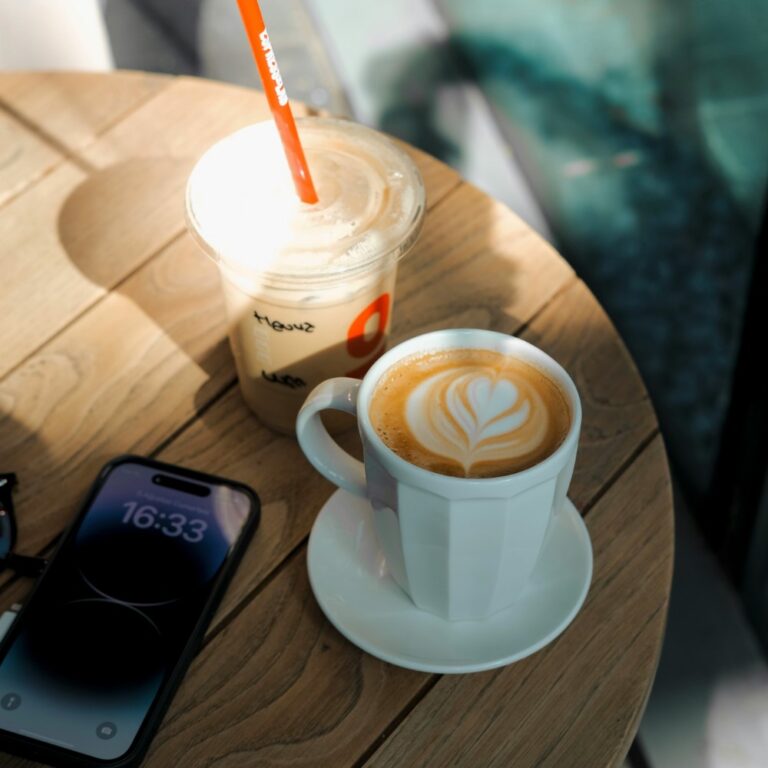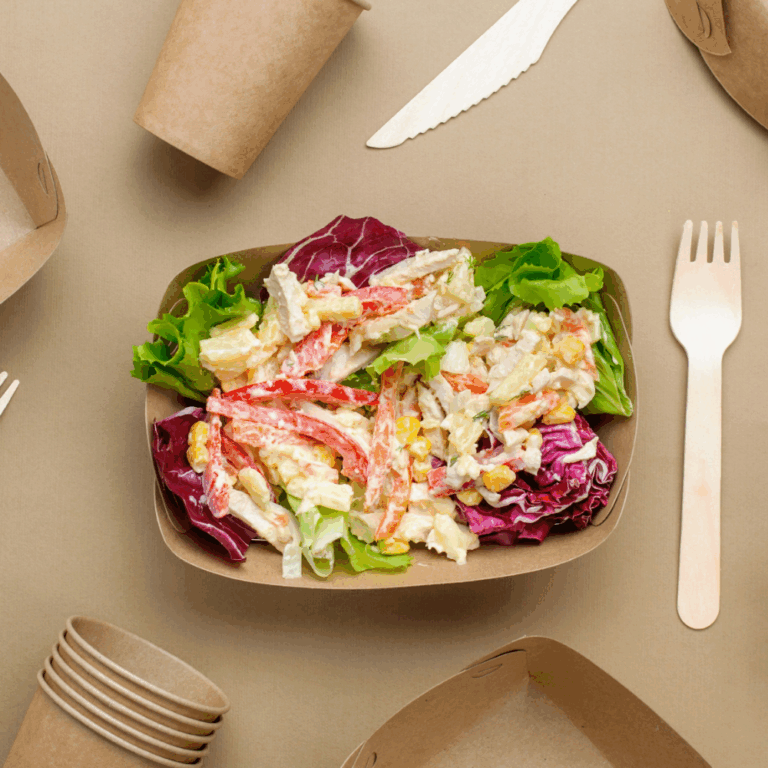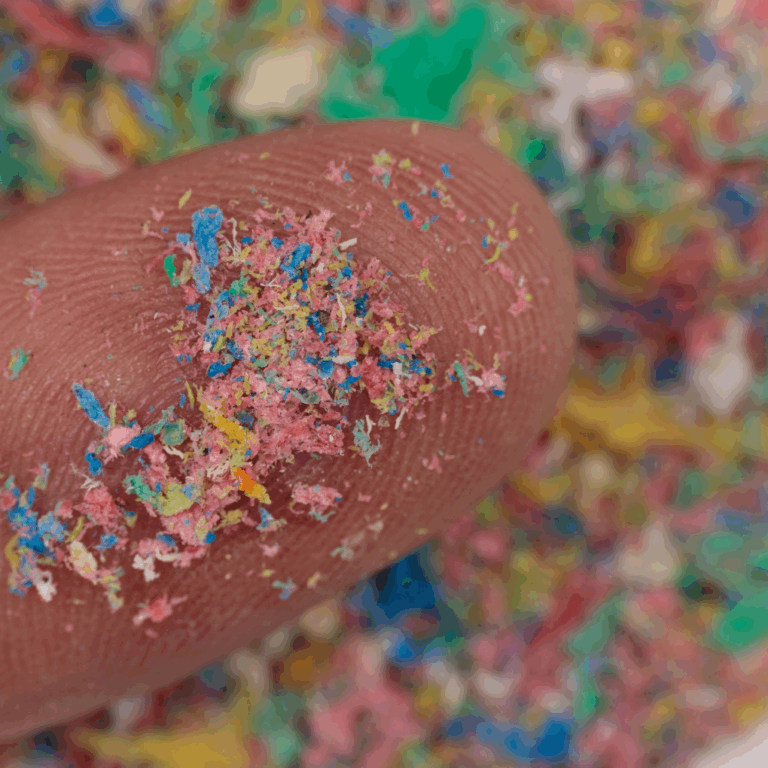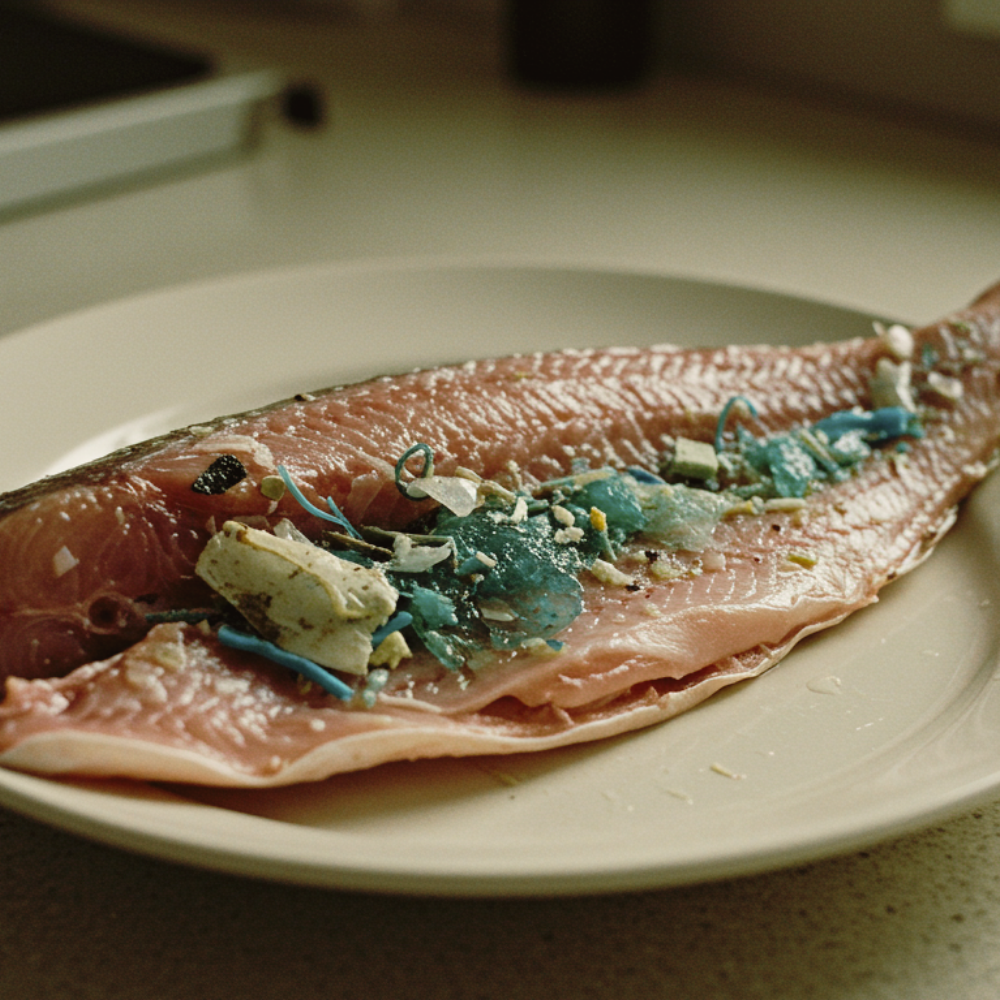
Key Takeaways
- Microplastics in food have been detected in seafood, salt, bottled water, fruits, and even airborne dust that lands on meals.
- Eating microplastics may expose us to harmful chemicals, with early research linking them to gut irritation, oxidative stress, and long-term health risks.
- You can lower your intake by filtering water, avoiding plastic packaging, and switching to glass or stainless steel food storage.
Every bite we take may come with an invisible side dish: microplastics. These tiny plastic fragments, smaller than a sesame seed, have been detected in seafood, salt, bottled water, fruits, and even the air that settles on our meals. Scientists estimate the average person consumes tens of thousands of microplastic particles each year, and the number could be much higher once nanoplastics are included.
Why does this matter? Microplastics don’t just pass through the environment; they carry additives and toxic chemicals that may affect human health. While research is still catching up, early studies link microplastics in food to gut irritation, oxidative stress, and the transfer of harmful compounds into the body.
In this guide, we’ll explore how microplastics end up in food, which foods are most affected, what the health risks may be, and practical steps you can take today to lower your exposure.
What Are Microplastics and Nanoplastics?
Microplastics might sound technical, but the name gives a clue – micro means minimal. Microplastics are essentially tiny pieces of plastic less than 5 millimeters in size. For context, 5 mm is about the size of a sesame seed. These specks of plastic can be so minuscule that some are invisible to the naked eye.
Microplastics have been found everywhere, from the depths of the oceans to remote mountaintops, meaning that even though they’re tiny, they’re prevalent. You can think of microplastics as the “crumbs” of the plastic world – the broken-down bits and pieces left behind after larger plastic items start to fall apart.
Nanoplastics, as the name implies, are the even smaller cousins of microplastics. While microplastics refer to pieces measuring up to 5 mm, nanoplastics typically refer to plastic particles smaller than 1 micrometer. To grasp how small that is, imagine something about 50 times smaller than the width of a human hair! These particles are so tiny that you’d need a microscope to see them. Nanoplastics often form when microplastics break down into even smaller particles over time. In other words, they’re the ultra-fine plastic “dust” that results from plastic degrading as far as it can go.
Where do micro- and nanoplastics come from? They originate in two main ways: from the breakdown of larger plastics and the direct release of tiny particles through wear and shedding.
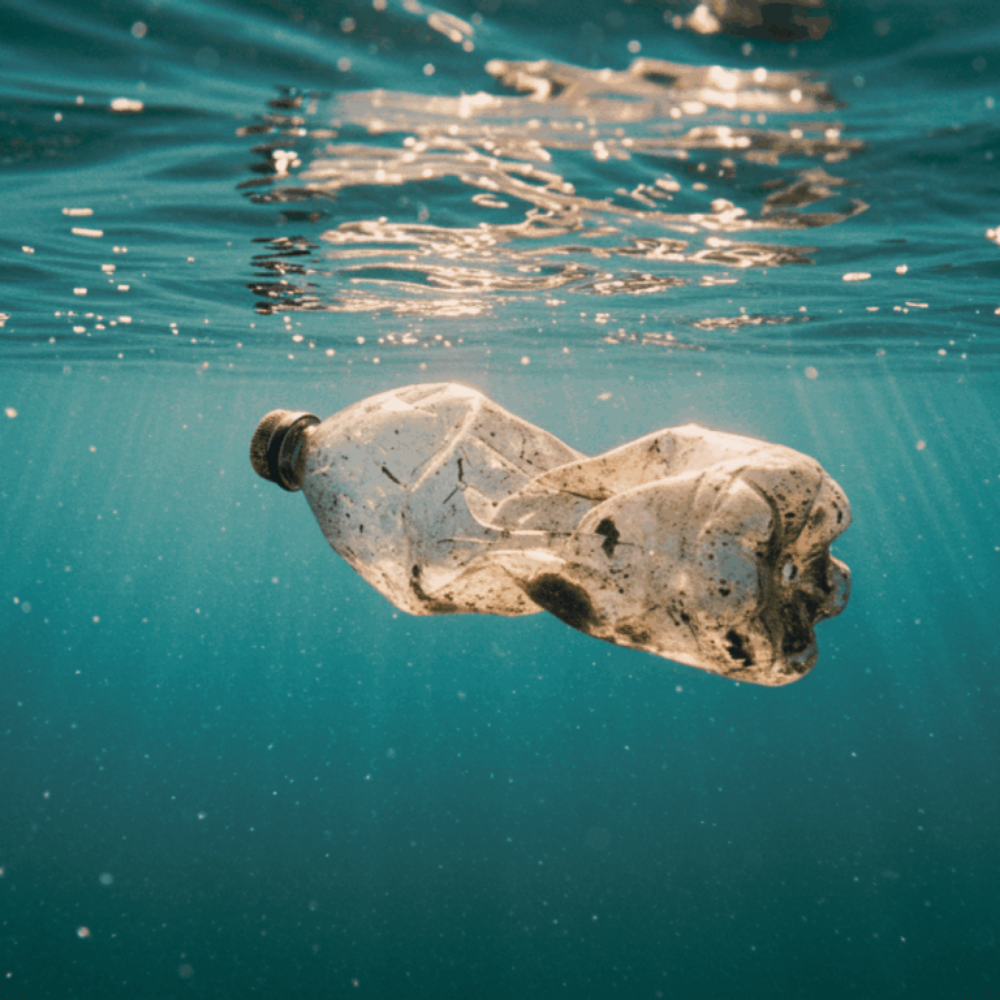
Breakdown of Larger Plastics
Most microplastics start as part of a bigger plastic item – think of a water bottle, plastic bag, or toy – that gets worn down and shattered into small fragments over time. Sunlight, heat, wind, and waves can cause a discarded plastic bag or bottle to become brittle and crack into tiny pieces.
For example, a plastic water bottle floating in the ocean might gradually splinter into fingernail-sized pieces and eventually break down into rice-sized microplastics. These broken fragments can be extremely persistent; they may never entirely disappear, instead just getting smaller and smaller. So, many microplastics are shreds and splinters of old plastic trash that the environment has weathered.
The Hidden Threat: Nanoplastics in Bottled Water A single plastic bottle doesn’t just break down into microplastics — it can release nanoplastics small enough to slip past filters and into your body. Find out what the latest research reveals about bottled water safety. Read more →Direct release of tiny plastics (wear and shedding)
Some microplastics are small by design, while others become tiny through everyday use and can enter the environment directly, eliminating the need for an intermediary.
Take synthetic fabrics, such as polyester or nylon. Every time you toss them in the wash, they shed microscopic fibers, thread-like plastics that slip right through wastewater systems and end up in rivers, lakes, and oceans.
Then there’s the stuff you wouldn’t expect, like car tires. Tires are a blend of rubber and plastic, and every mile you drive, they shed invisible particles onto roads that eventually get washed into storm drains and waterways. Even everyday items, such as synthetic sponges, plastic-coated paints, and certain cosmetics, can contribute.
Plastic microbeads may be banned from most face scrubs and body washes, but that doesn’t mean our cosmetics are plastic-free. Many makeup and skincare products still contain hidden forms of microplastics, such as polyethylene, polypropylene, or acrylates copolymer. These ingredients help products feel smooth, last longer, or have that silky finish. Even if they don’t wash straight down the drain, they can still end up in the environment during production or when we rinse them off at night.
How Microplastics End Up in Your Food?

Microplastics don’t come from a single source; they slip into food through water, soil, packaging, and even the air around us. Tiny fragments can be absorbed by crops, eaten by fish, or released from the plastic containers we use every day. By the time a meal is on the table, it may already carry plastics from multiple points along the way. Here are the main routes scientists have uncovered.
Seafood and Shellfish
Seafood is one of the most direct ways plastics move from the environment into people. Fish ingest fragments floating in oceans, rivers, and lakes, while filter feeders like mussels, clams, and oysters accumulate them as they strain water for food. Because we eat these animals whole, we also take in the plastics they carry. Researchers have even suggested mussels could act as “bioindicators” of local water pollution levels. Choosing seafood from cleaner waters or trimming out organs where particles tend to concentrate can help limit exposure.
Salt and Sugar
Salt, especially sea salt, consistently contains microplastics. During seawater evaporation and packaging, fragments make their way in, and scientists have measured hundreds of particles in a single kilogram. Processed sugar has also tested positive, most likely due to refining and storage equipment. Some brands now test their products for purity, and rock salt from older underground deposits may contain fewer modern plastic traces.
Bottled Water and Beverages
Plastic-bottled water is one of the most significant contributors to microplastic intake. Reviews suggest a single liter may hold hundreds of particles, and newer studies show that nanoplastics, too small to see with standard equipment, could be even more common. Other drinks bottled in plastic, like beer or soda, can pick up fragments during bottling. Relying on a home water filter and refilling glass or stainless steel bottles is one way to reduce your reliance on bottled water.
Fruits, Vegetables, and Honey
Crops can absorb microplastics through irrigation water or polluted soils. Apples, carrots, and other fruits and vegetables have all tested positive in recent studies, while honey shows particles that likely come from both environmental exposure and processing equipment. Washing and peeling produce can remove some surface contamination, though plastics taken up through roots remain inside the plant tissues. Local honey sold in glass jars is often considered a safer choice.
Microplastics in Soil: What Every Earth-Conscious Gardener Should Know Plastics in soil can move into plant roots and, eventually, our food. Discover how soil health, compost choices, and mulch materials impact microplastic buildup, and learn simple steps gardeners can take to reduce it. Read more →Food Packaging and Cooking Tools
Single-use plastic packaging and standard kitchen tools are another pathway. Cutting food on plastic cutting boards, microwaving in plastic containers, or eating takeout served in plastic-lined paper cups all release microplastics that migrate into meals. Heating speeds up this process, which is why microwaving or storing hot food in plastic makes contamination more likely. Switching to glass, ceramic, or stainless steel for storage and cooking can dramatically reduce these exposures.
Airborne Microplastics on Meals
It’s not only what’s inside food that matters — it’s what lands on it. Tiny airborne plastic fibers shed from clothing, furniture, and household dust can settle onto plates while we eat. Researchers estimate that a single meal left uncovered in a typical household can collect dozens of particles this way. Covering food when possible and ventilating indoor spaces can help reduce what lands on your plate.
7 Daily Habits That Sneak Microplastics into Food (and Easy Swaps)
You might be adding microplastics to your meals without even realizing it. These tiny plastic particles can carry chemicals linked to hormone disruption, inflammation, and other long-term risks. The good news? With a few simple swaps, you can cut your exposure while keeping life easy.
🔥 Microwaving in Plastic
Heating food in plastic containers breaks them down, releasing microplastics and chemicals into your meal — especially if the container is scratched or worn. Switch to glass or ceramic containers that are safe to heat and last much longer. [See our favorite glass storage picks →]
🥤 Takeout Containers & “Paper” Cups
Most takeout boxes and coffee cups are lined with plastic. Hot soups, sauces, or drinks cause the lining to shed into your food. Bring a reusable cup or container whenever possible, or transfer your order into a glass or stainless steel before eating.
♻️ Worn-Out Plastic Containers
Reusing containers is eco-friendly, but old plastic can scratch and flake, releasing microplastics into food. Replacing them with glass or stainless steel saves money in the long run since they don’t wear out as quickly.
🔪 Plastic Cutting Boards
Every slice leaves grooves that release plastic shavings into your food. Bamboo and wooden boards don’t shed plastic, are naturally antimicrobial, and even keep knives sharper.
💧 Unfiltered Water
Microplastics show up in tap, bottled, and even well water. A high-quality filter can reduce your daily exposure and improve the taste of your water. I use the AquaTru Carafe and notice a huge difference. [Explore which water filters actually work →]
🍬 Chewing Gum
Most gum bases are made from synthetic rubber — yes, a form of plastic. That means every chew could release microplastics. Look for gum made with natural chicle or other plant bases. [See our guide to plastic-free gum →]
🧂 Everyday Staples: Salt, Sugar, and Honey
Research shows microplastics in everyday staples like sea salt, table salt, cane sugar, and honey. Choosing minimally processed options, especially those packaged in glass, can help reduce your intake.
Can What You Eat Make a Difference?
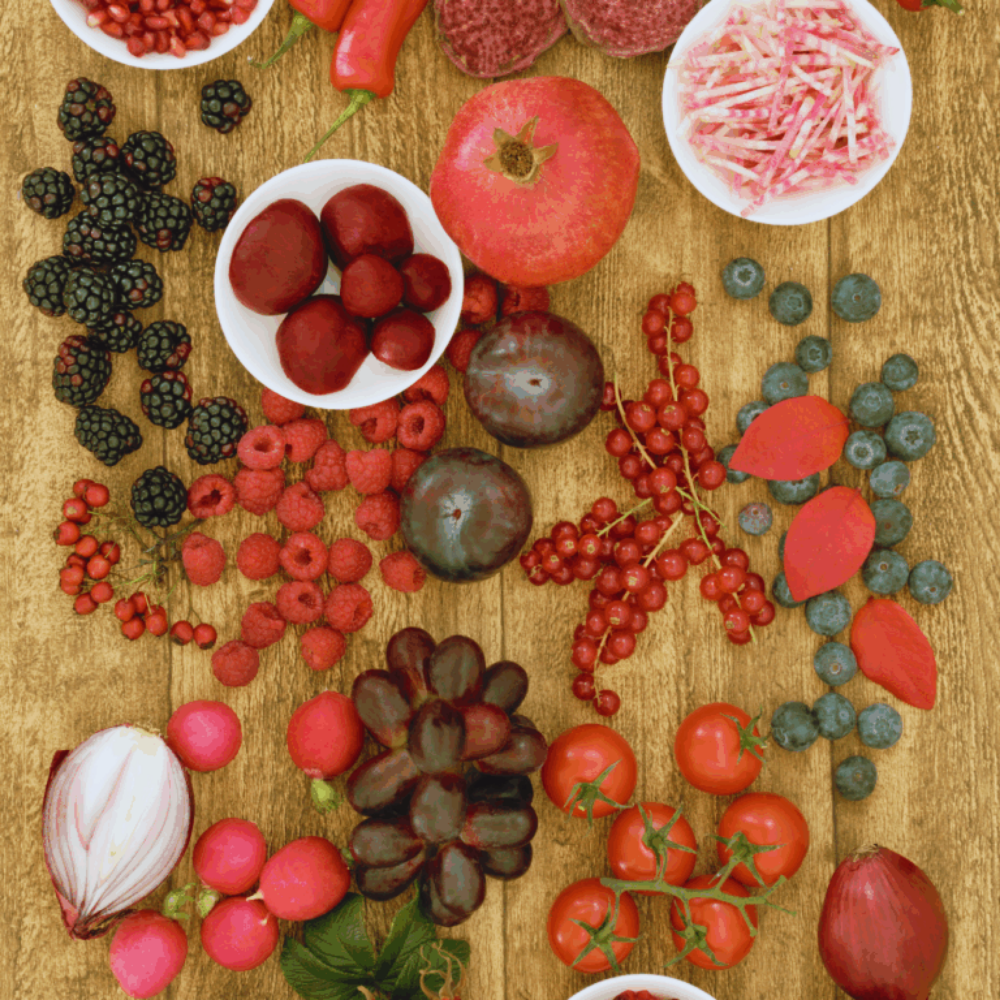
Cutting back on plastic exposure is the most crucial step, but some foods may help the body handle the stress microplastics create. Early research suggests diets high in fiber, antioxidants, and probiotics support gut health and reduce inflammation — two areas microplastics may disrupt. Think berries, leafy greens, whole grains, yogurt, and sauerkraut.
The Power of Anthocyanins
Bright foods like blueberries, blackberries, red cabbage, and purple sweet potatoes get their color from anthocyanins, plant compounds with potent antioxidant and anti-inflammatory effects. These compounds may help protect cells from oxidative stress and damage caused by pollutants, including microplastics. Adding more colorful produce to your diet is a simple way to strengthen your body’s defenses.
Hormones and Reproductive Health
Some of the biggest concerns around microplastics involve hormone balance and reproductive health. Studies suggest plastics may interfere with hormone signaling and harm sensitive tissues like the ovaries and testes. While the research is still developing, anthocyanins may play a supportive role here, too, by helping reduce inflammation and oxidative stress in these systems.
No single food can “cancel out” plastic exposure, but a plant-forward, fiber-rich diet packed with colorful fruits and vegetables is a smart way to support your body’s resilience. In other words, eating the rainbow might give you extra protection against the hidden risks of microplastics.
What Microplastics Might Be Doing to Our Health
While research is still catching up, early evidence suggests that having plastic fragments in our bodies is far from harmless. Scientists are raising red flags about the health risks of microplastics, from inflammation to hormone disruption.
Microplastics and Inflammation
One of the biggest concerns is inflammation. When we ingest microplastics through food, water, or even air, the immune system may treat them as invaders. This can trigger low-grade, chronic inflammation, particularly in the gut. Over time, chronic inflammation is linked to conditions such as heart disease, metabolic issues, and digestive disorders. Researchers also warn that nanoplastics — the even smaller particles — may cross cell barriers and circulate through the bloodstream, potentially reaching organs.
Chemical Leaching
The plastic itself isn’t the only problem. Microplastics often contain chemical additives like BPA and phthalates, which are known to interfere with hormones and metabolism. They can also act as sponges, absorbing pesticides and heavy metals from the environment and carrying those toxins into the body.
Gut Health and the Microbiome
The digestive system is one of the first areas affected by microplastics. Early studies suggest they may disrupt the gut microbiome — the community of bacteria that supports digestion, immunity, and even mental health. Altering this balance could have wide-reaching effects on overall wellness.
Taken together, these findings paint a concerning picture: microplastics may be small, but their potential to disrupt human health is significant.
A Growing Concern: Why Microplastics in Food Matter
We’re Ingesting More Than We Think
A headline study from the University of Newcastle, commissioned by WWF, found that the average person might ingest about 5 grams of plastic every week, roughly the weight of a credit card. That plastic comes from many sources, including drinking water, seafood, salt, and even fresh produce.
And food isn’t the only concern. Microplastics have also been found in the air we breathe and the dust in our homes, which means exposure can be constant and hard to avoid.
What the Experts Are Saying
Scientists are still learning how microplastics affect the human body, but early research raises real concerns. Organizations like the World Health Organization (WHO) and the European Food Safety Authority (EFSA) agree that more studies are needed. Yet, evidence already points to red flags: inflammation, hormone disruption, oxidative stress, and possible impacts on gut health and fertility.
Because microplastics are so tiny, and because they can carry other toxic chemicals, researchers worry they might slip into places they don’t belong: our cells, our hormones, even our reproductive systems. Chronic, low-level exposure may cause harm long before symptoms appear, which is why experts recommend reducing exposure now rather than waiting for more proof.
How Scientists Detect Microplastics in Food
You might wonder: how do scientists even find something so small?
The answer is high-tech, but the idea is simple. Researchers shine special lasers onto samples of food and water to see how particles reflect or absorb the light, a bit like spotting a sparkle in the dark, but with precision tools. They also filter liquids and use powerful microscopes to view the fragments left behind. These methods can even reveal what kind of plastic it is, whether from packaging or pollution.
The challenge? Detecting nanoplastics, the ultra-tiny pieces that slip through most filters. New techniques are being developed, but for now, even experts admit we’re only seeing part of the picture.
Why Microplastics Matter Beyond Our Plates
While microplastics in food can seem like a personal health issue (and it is), they’re also part of a much bigger environmental story.
Every time we throw out a piece of plastic, a single-use fork, a takeout container, or a worn-out kitchen sponge, it doesn’t just disappear. Plastics do not biodegrade the way organic materials do. Instead, it breaks down into smaller and smaller pieces, eventually becoming microplastics or nanoplastics. Once they’re out in the world, they’re tough to remove, drifting through the air, settling into the soil, washing into rivers and oceans, and being consumed by wildlife.
Microplastics have been found at the deepest ocean points and on mountaintops. They’ve also been discovered in rainwater, Arctic snow, and inside fish, birds, and insects. This is a global issue that’s unlikely to go away anytime soon.
The connection to our kitchens? It starts with our choices. When we reduce our plastic use, say, by switching to glass containers or avoiding plastic-lined cups, we’re not just protecting our health. We’re also reducing the amount of plastic that enters the waste stream, the oceans, and, eventually, the food chain.
Our daily habits might seem small, but collectively, they add up. Whenever we choose reusable over disposable, we’re helping shrink the global plastic footprint—one meal, one container, one fork at a time.
Don’t Miss: Microplastics: Health Risks, Sources, and How to Reduce Exposure Want the bigger picture on how microplastics affect both people and the planet? Read more →What Industry and Policy Can Do
While knowing we can make better choices at home is empowering, individual action isn’t enough. Companies and policymakers also need to make significant changes.
Many manufacturers still rely heavily on plastics in packaging, coatings, labels, containers, and even laminated paper products. The bright side is that some brands are stepping up, offering plastic-free packaging, using plant-based materials, or switching to more transparent labeling that helps consumers understand what’s safe to reuse or heat.
Governments are finally starting to take plastic regulation more seriously. While the recent UN plastic treaty didn’t pass, progress is happening in other ways. Some countries and cities have banned single-use plastics or required businesses to phase out harmful additives. Others are working on laws that would make companies prove their packaging is actually recyclable or compostable.
Still, there’s a long way to go. That’s why consumer awareness matters; companies and legislators tend to listen when people ask questions and demand safer, more innovative alternatives.
So yes, keep making those small swaps at home, but don’t be afraid to support brands that are doing it right or to speak up about the need for more transparent labeling, better packaging, and stricter rules around plastic use.
📚Learn more
Industry and Policy Solutions for Plastic Pollution
Want to learn more about how companies and governments are tackling the plastic problem and how you can help push for change? Check out these trusted resources:
- Plastic Pollution Coalition – Global network advocating for a plastic-free world through corporate accountability and policy change.
- Break Free from Plastic Movement – International movement pushing for system-wide solutions and brand responsibility.
- Beyond Plastics – Focused on transforming the plastics economy through legislation, education, and advocacy.
- Oceana – Plastics Campaign – Campaigns for protecting oceans and banning harmful single-use plastics.
- Ellen MacArthur Foundation – Plastics Initiative – Driving innovation toward a circular economy where plastics never become waste.
Small choices at home can make a significant difference, but advocating for larger changes helps reshape the system for the better.
FAQs on Microplastics in Food
Yes — organic foods are generally less likely to contain microplastics, though it’s not a guarantee of being plastic-free. Microplastics are widespread in soil, water, and air, so even organically grown produce can still be exposed.
Nanoplastics are so small that they can cross cell barriers and move into the bloodstream or organs. While research is still new, many scientists believe nanoplastics could pose greater risks than larger microplastics because they’re harder for the body to filter out.
Yes. Studies show bottled water often contains hundreds of microplastic particles per liter, primarily from packaging and bottling. Tap water can also contain microplastics, but usually at lower levels depending on the water source and treatment.
Yes. If compost or soil is contaminated with plastics — from packaging, synthetic fertilizers, or even clothing fibers in wastewater sludge — crops can absorb particles through their roots, which then enter the food chain.
Researchers are working on better detection methods, studying health impacts, and exploring ways to limit plastics in farming, food packaging, and water systems. Policy makers are also considering bans and stricter regulations on single-use plastics to cut down contamination at the source.
This Has Been About Microplastics in Food
It’s incredible how microplastics can sneak into our food from polluted oceans and farmland to the kitchens in our own homes. Simple habits, like microwaving in plastic, using old containers, or chopping on plastic cutting boards, can add tiny particles to our meals without us even realizing it.
The bright side is that small everyday changes can make a real difference. Swapping plastic for glass or ceramic, choosing bamboo cutting boards, and paying attention to takeout packaging are simple steps that cut your exposure while also reducing waste.
Microplastics aren’t just a personal issue; they’re showing up everywhere, from mountaintops to the deepest oceans. Every piece of plastic we avoid or reuse helps slow down pollution and protect the ecosystems that support our food supply.
And here’s where the real power lies: when our personal choices add up and more people start asking for change, companies and leaders pay attention. Together, we can push for safer materials, more innovative packaging, stronger rules, and more honesty from brands. Change doesn’t just start in labs or boardrooms — it begins in kitchens like yours.
📚References
- American Chemical Society. (2023, June). Cutting boards can produce microparticles when chopping veggies. American Chemical Society. https://www.acs.org/pressroom/presspacs/2023/june/cutting-boards-can-produce-microparticles-when-chopping-veggies.html
- American Chemical Society. (2024, February 28). Want fewer microplastics in your tap water? Try boiling it first. American Chemical Society. https://www.acs.org/pressroom/presspacs/2024/february/want-fewer-microplastics-in-your-tap-water.html
- Columbia University Mailman School of Public Health. (2024, January 8). Bottled water can contain hundreds of thousands of nanoplastics. https://www.publichealth.columbia.edu/news/bottled-water-can-contain-hundreds-thousands-nanoplastics
- European Chemicals Agency (ECHA). (2023). Restriction on intentionally added microplastics. https://echa.europa.eu/hot-topics/microplastics
- European Food Safety Authority (EFSA). (2016). Presence of microplastics and nanoplastics in food, with particular focus on seafood. EFSA Journal, 14(6), 4501. https://doi.org/10.2903/j.efsa.2016.4501
- Kim, J. S., Lee, H. J., Kim, S. K., & Kim, H. J. (2018). Global pattern of microplastics (MPs) in commercial food-grade salts: Sea salt as an indicator of seawater MP pollution. Environmental Science & Technology, 52(21), 12819–12828. https://doi.org/10.1021/acs.est.8b04180
- Leslie, H. A., van Velzen, M. J. M., Brandsma, S. H., Vethaak, A. D., Garcia-Vallejo, J. J., & Lamoree, M. H. (2022). Discovery and quantification of plastic particle pollution in human blood. Environment International, 163, 107199. https://doi.org/10.1016/j.envint.2022.107199
- Liebezeit, G., & Liebezeit, E. (2013). Non-pollen particulates in honey and sugar. Food Additives & Contaminants: Part A, 30(12), 2136–2140. https://www.tandfonline.com/doi/abs/10.1080/19440049.2013.843025
- Nature. (2023, June 27). What happens when you microwave that plastic bowl? https://www.nature.com/articles/d41586-023-02091-w
- University of Newcastle. (2019, June 12). Plastic ingestion by people could be equating to a credit card a week. University of Newcastle, Australia. https://www.newcastle.edu.au/newsroom/featured/plastic-ingestion-by-people-could-be-equating-to-a-credit-card-a-week
- World Health Organization (WHO). (2019). Microplastics in drinking-water. Geneva: World Health Organization. https://www.who.int/publications/i/item/9789241516198
